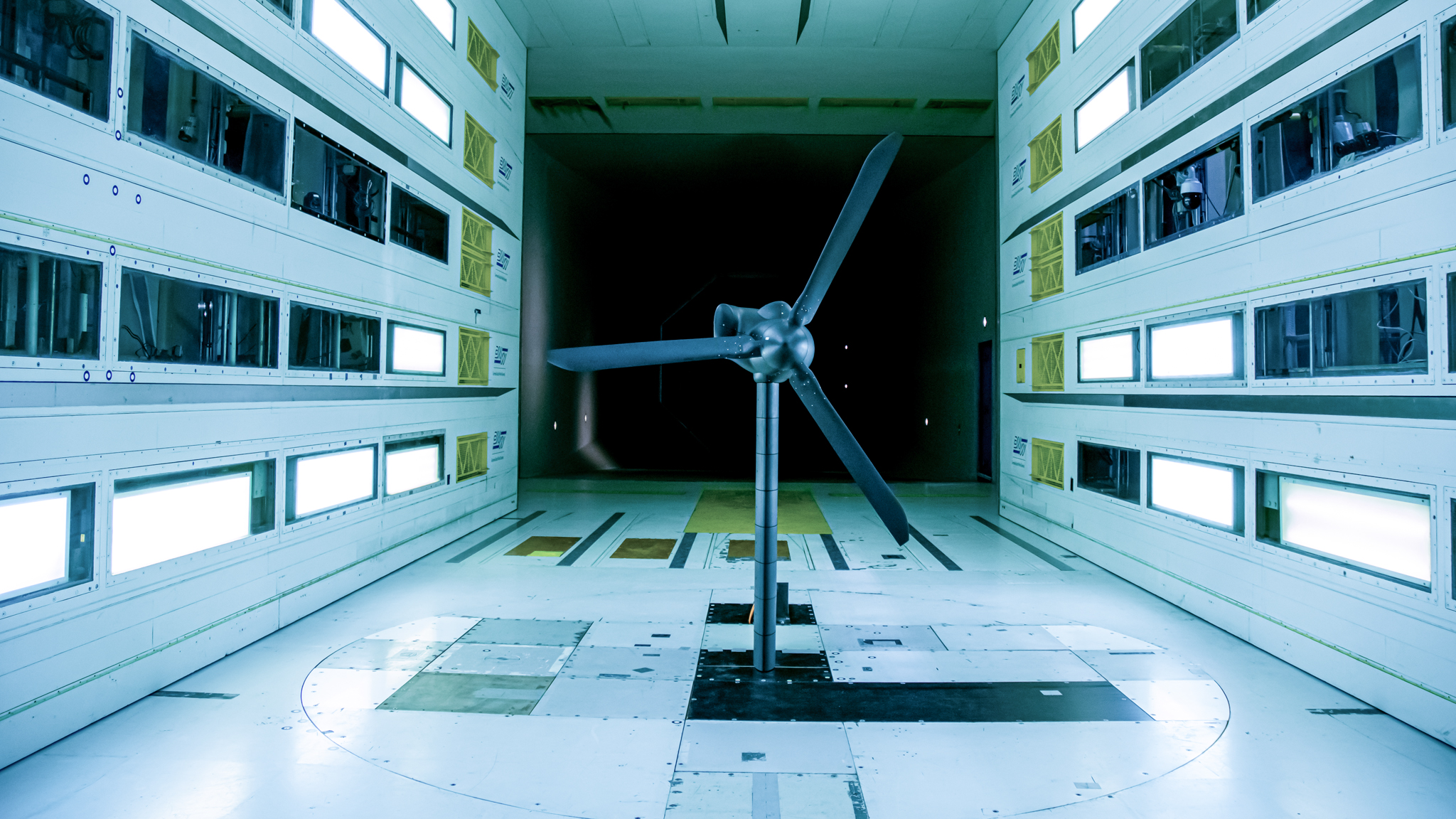One of the main drivers behind improving the design of a tiltrotor is the aeroelastic instability characterised by strongly coupled wing-rotor movements, also known as whirl flutter. This phenomenon generally limits the maximum speed that the aircraft can achieve.
Wind tunnel testing helps to understand and improve these sorts of aerodynamic properties of an aircraft. By means of scale models and wind tunnel testing, engineers can simulate and optimise the performance of an aircraft.
Reliable and precise testing
TED is an advanced device consisting of three main components: the trim (the offset), the excitation (the frequency), and the amplitude (the displacement). Since these three components are independent of each other, TED can be adapted to the specific excitation needs of each aeroelastic rotor model. This provides TED with a reliable and precise method to test and optimise flight performances under specific conditions.
The device has a robust gear system and an integrated blade spring mechanism, allowing for precise amplitude control. Furthermore, TED can simulate a wide frequency range of 1 to 25 hertz, enabling it to replicate a wide range of realistic scenarios. This enables our clients to perform tests such as whirl flutter, which can optimise flight performances.
Patent
For TED, which was developed for the ATTILA project (Advanced Testbed for TILtrotor Aeroelastics), a patent application was recently submitted with success and has now been granted in both Europe and the US. The patent enables NLR to continue utilising and valorising the unique technology behind TED in the future. With this technology and patent, NLR profiles itself as the strategic partner in the development and testing of advanced (tilt)rotor systems. This strengthens our position in the aerospace industry and contributes to the development of innovative aerospace technologies.



